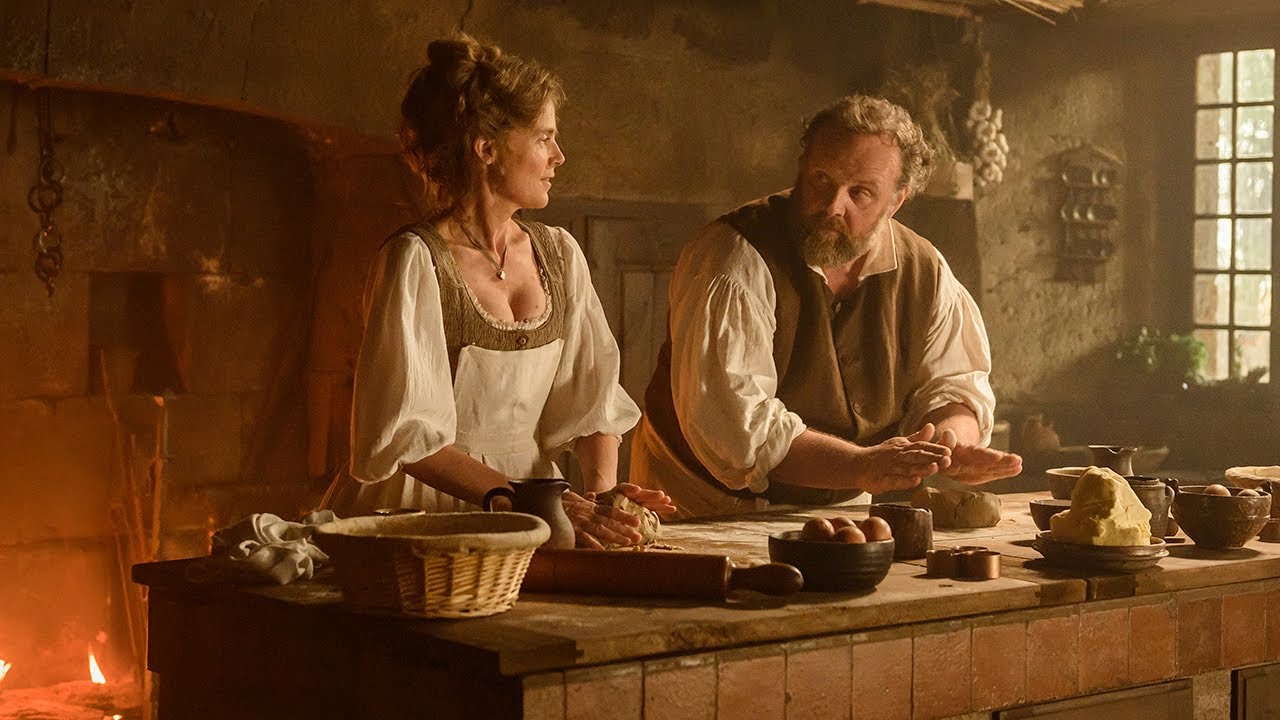MARIANI’S
Virtual
Gourmet
July 10, 2022
NEWSLETTER
IN THIS ISSUE
THE STATE OF SUSTAINABLE SEAFOOD TODAY
By John Mariani
NEW YORK CORNER
PEAK
By John Mariani
ANOTHER VERMEER
CHAPTER 27
By John Mariani
NOTES FROM THE WINE CELLAR
THE
PLEASURES OF RED WINES
NOT DESIGNED TO ROCK
YOUR SOCKS
By John Mariani
❖❖❖
 on A
History of Westchester County Country
Clubs. Go to: WVOX.com.
The episode will also be archived at: almostgolden.
on A
History of Westchester County Country
Clubs. Go to: WVOX.com.
The episode will also be archived at: almostgolden.
❖❖❖
THE PRECARIOUS STATE OF
SUSTAINABLE SEAFOOD TODAY
By John Mariani
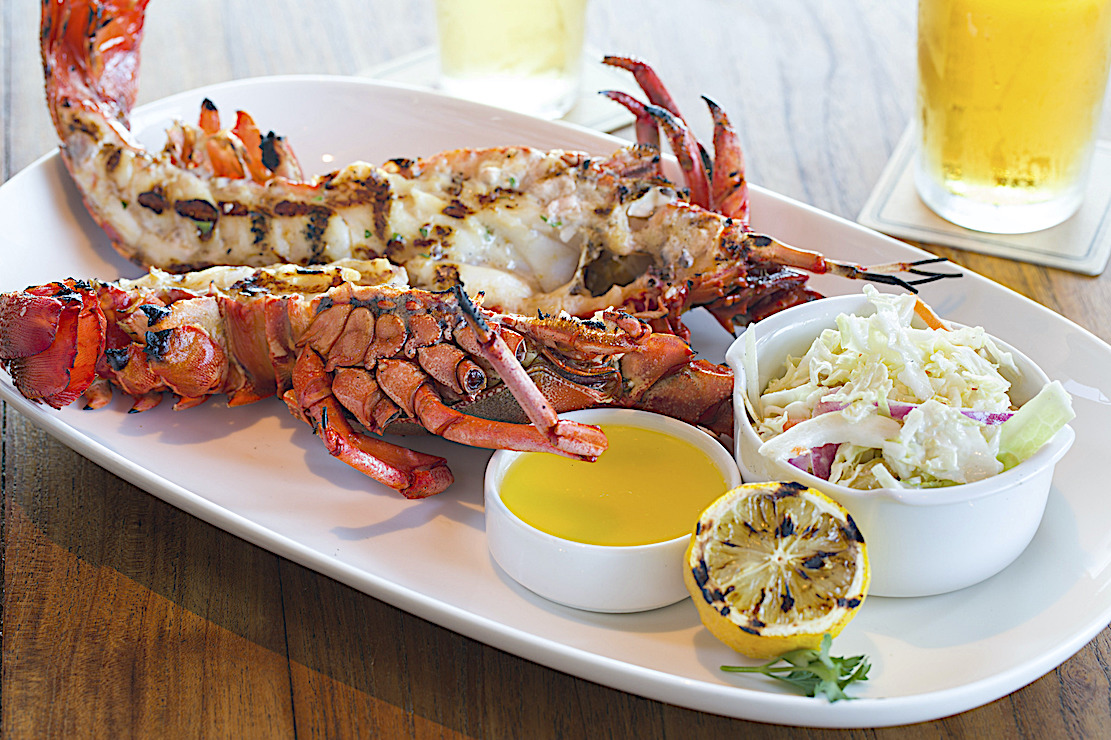
At a time when food shortages are
beginning to impact global markets, seafood
harvesting and sales have been particularly
vulnerable, owing to climate change, overfishing
and demand. Sustainability in the industry takes
many forms, including fish farming. To get a
perspective on what’s going on, I interviewed
Sam King, CEO & President of King’s Seafood
Company in San Diego, which opened its first
restaurant in 1984, now
with six different concepts with 22 locations
including 6 Water Grills, 12
King’s Fish Houses, Meat on Ocean, Pier
Burger, Lou & Mickey’s and 555 East.
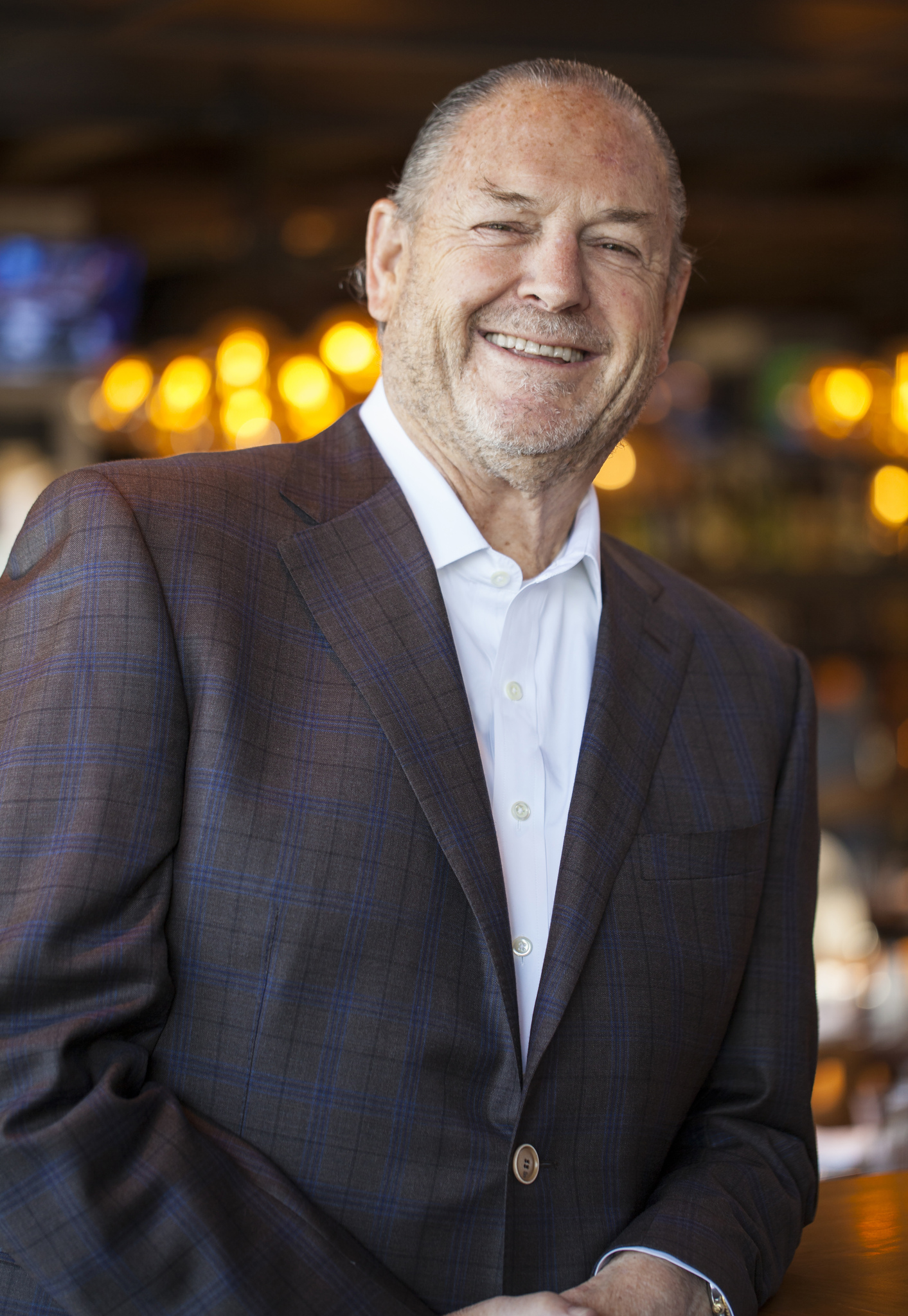
Seafood prices are through the
roof. Why?
Seafood pricing has been
all over the board this year. All oysters are up
at least 15% to 20% over 2019 and some other
examples of the largest increases include halibut,
Chilean seabass, swordfish, jumbo lump crabmeat,
Barents Sea crab legs and many more. We have not
seen seafood prices affected too much regionally,
other than what is related to some of the labor
shortage issues that have happened. This has
happened across all regions.
Starting five years,
North American hard-shell lobster pricing has
increased by 30-40% for several reasons. The first
was the introduction of the “Lobster Roll,” which
went national around five years or so ago, putting
tremendous pressure on lobster meat. The
second is the increasing middle class in China and
their appetite for live seafood products, which
has increased demand dramatically. In May
2016, our cost of a 2-pound lobster was $16.60,
but in May 2022, our cost was $33.50, which is
over a 100% increase in what may be the largest
increase of all of our seafood products during
that time.
What is the situation
with wild salmon as opposed to farm-raised?
In the past our company
has always enjoyed displaying our love of the
spring and summer salmon runs. Some years we
have had seven to eight different rivers
represented on our menus during a season run of
King Salmon, 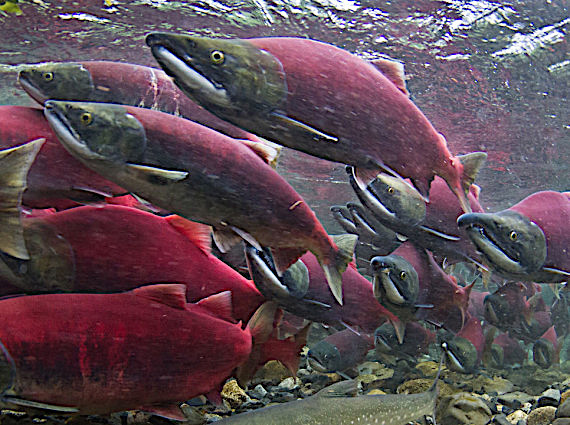 which
have included Copper, Columbia, Neets Bay, Nootka
Sound, and Queen Charlotte to name a few.
Unfortunately, the past several years has seen
these numbers reduced. For example, last year
we had only three rivers represented on our menus.
With the recent opening of Copper River last week,
we hope we will have more rivers to pull from this
year.
which
have included Copper, Columbia, Neets Bay, Nootka
Sound, and Queen Charlotte to name a few.
Unfortunately, the past several years has seen
these numbers reduced. For example, last year
we had only three rivers represented on our menus.
With the recent opening of Copper River last week,
we hope we will have more rivers to pull from this
year.
Our company buys two
different farmed-raised salmon: One is an
Atlantic salmon from British Columbia that we buy
from Mowi, the largest producer, which has
certification from the GSSI (Global Sustainable
Seafood Initiative). At our Water Grills, we buy
farmed King Salmon from New Zealand when the wild
salmon is not available during the late fall and
winter. We believe that the great work of
some of the NGOs has helped keep farmed salmon
honest and has been necessary to require the farms
to operate at a much higher environmentally
sensitive level. If we were to eliminate the
4 billion pounds of farmed salmon consumption
annually, it would have devastating effects on
wild seafood stocks.
What do you consider
the differences between wild and farm-raised
seafood?
I spoke to the staff
members that operate the Aquarium of the Pacific
in Long Beach several years ago about this
subject. I knew this audience came in with an
anti-farming bias, so I came up with the theme of
looking at countries that were large proponents of
aquaculture and matching their Green Living
Rankings that were just listed in US News &
World Report. Interestingly, four
countries in the top 10—Norway, Japan, New
Zealand, and Canada—are also big in
aquaculture. My question to them was how
could these countries manage both of these
competing synergies. In fact, this is one of our
biggest frustrations with the state of California,
which has over 1,000 miles of pristine coastline
perfect for growing seafood products, so why do we
not lead the world in this genre?
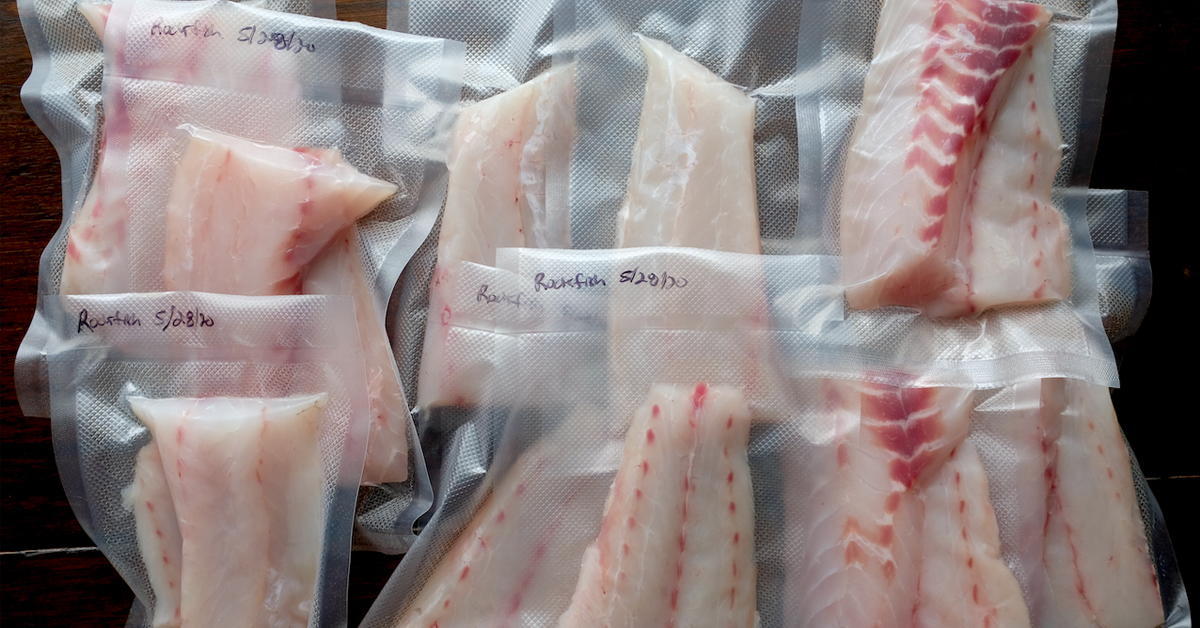
What exactly is flash
freezing and how does it affect the product?
We’ve heard for many
years now that wild Mediterranean seafood is in
short supply.
Our company utilizes
several products from the Mediterranean
Sea. Some of our Spanish octopus comes from
the Mediterranean Sea. We also purchase
farm-raised black bream and branzino, both farmed
in Turkey. These are the only items we
presently utilize from this region; however, it is
sad to read about some of the reducing fish stocks
in the area.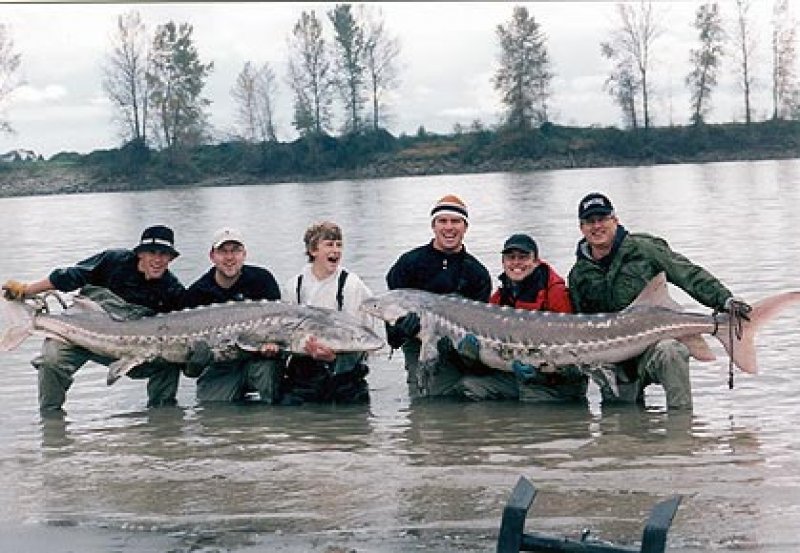
Which overfished
species are you most concerned about?
I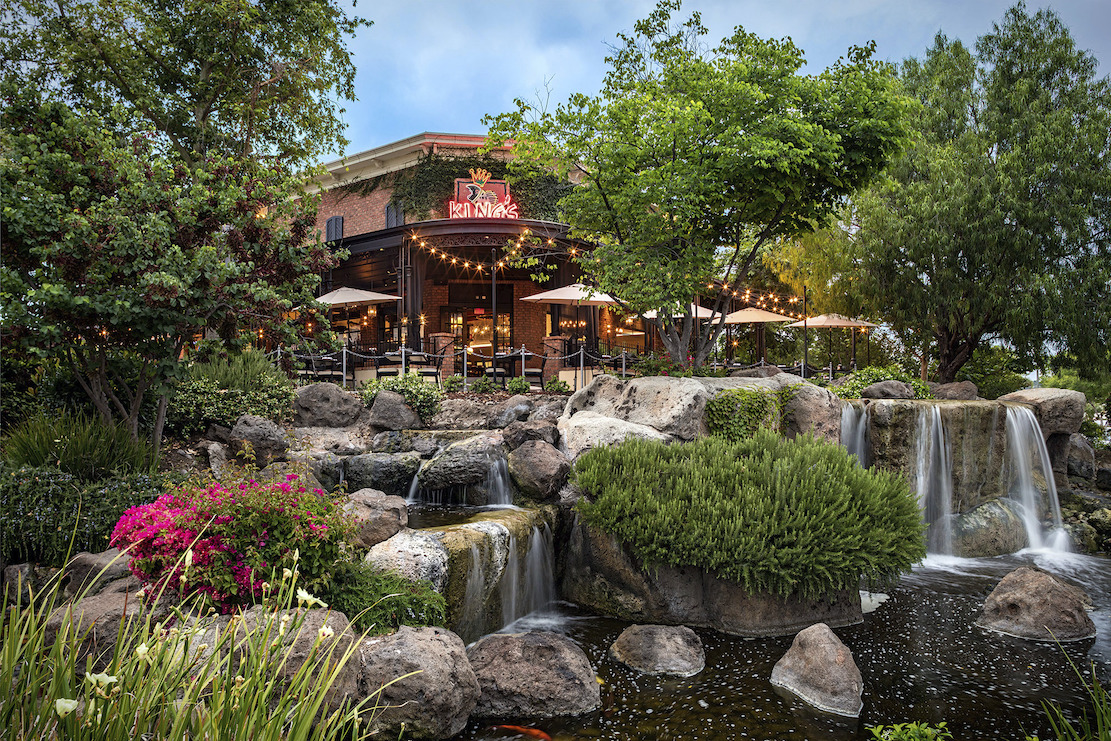 s the
industry suffering from supply chain issues?
s the
industry suffering from supply chain issues?
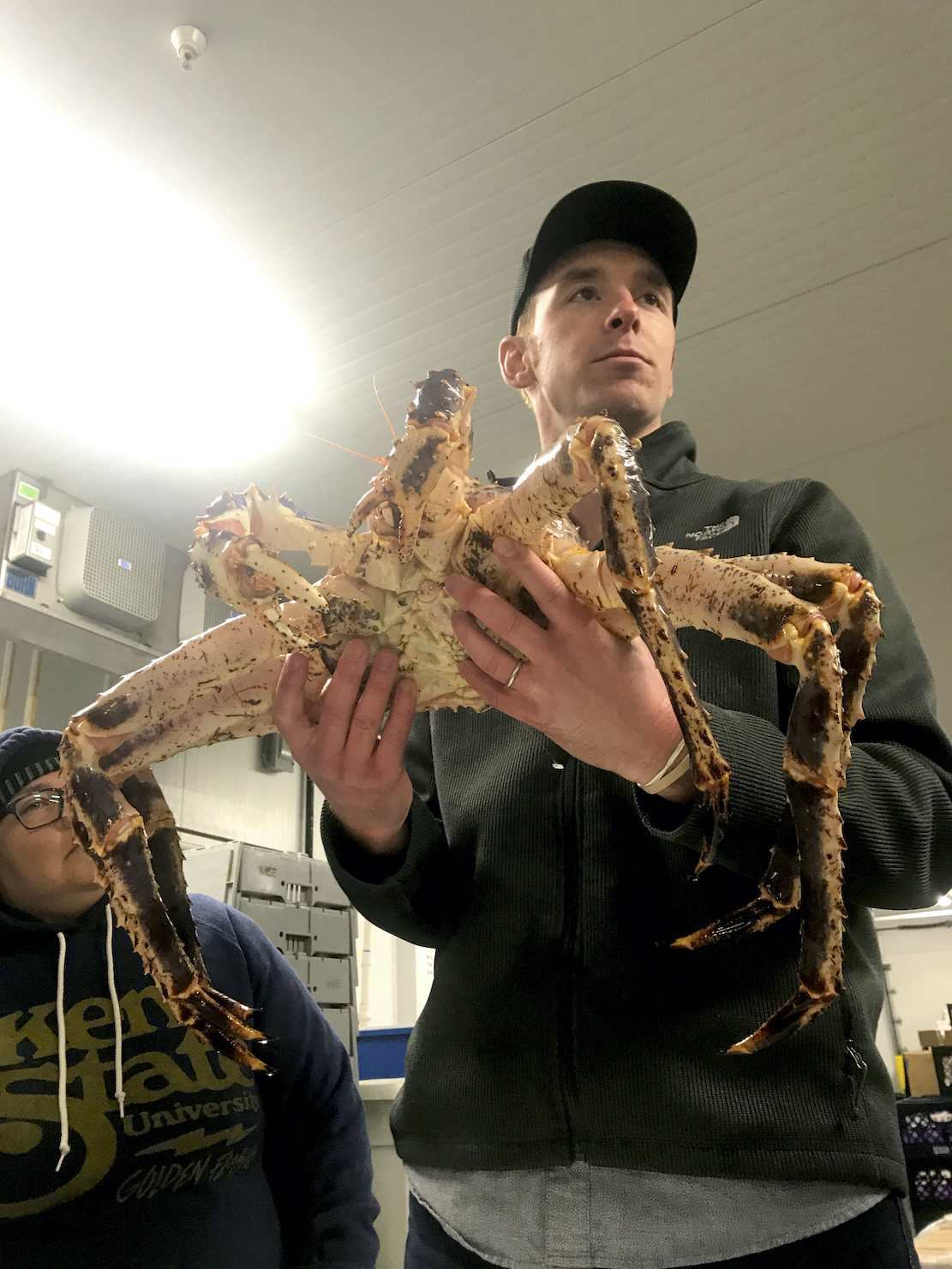 How has your
company committed to sustainability?
How has your
company committed to sustainability?
King’s Seafood Company
has always been committed to both sustainability
and environmental stewardship. We have shown
leadership by committing money to research, being
on boards, such as the Aquarium of the Pacific and
the Wrigley Institute of Environmental Science,
and in many other ways. We also operate our
seafood distribution facility using recycled
trays, bins, and containers, allowing us to use
almost zero cardboard boxes for our seafood
deliveries to our restaurants.
How have warmer waters
affected seafood?
Warmer waters, if not
corrected, will continue to have a profound effect
on our seafood products. Whether it be algae
blooms that affect much of the predominate food in
the form of phytoplankton or marine food chains
that impact the pelagic food web. Warmer waters
also promote ocean acidification, which is harmful
to our shellfish populations. Our company
has invested with a group out of Washington State
that is working to help figure out what we can do
to move forward and help slow this process.
❖❖❖
PEAK
30 Hudson
Yards, 101st floor
332-204-8509
By John Mariani
Photos by Alex Staniloff
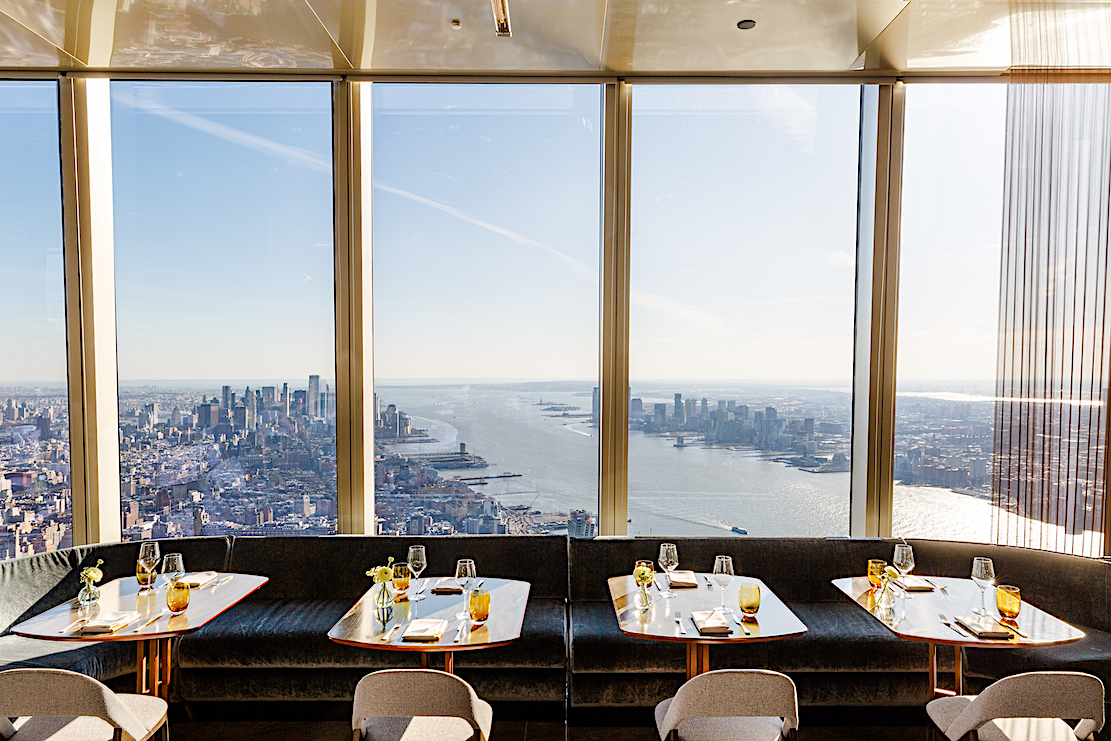
Only those who have dined at Windows
on the World in New York’s World Trade Center,
the Signature Room in Chicago or at sky-high
restaurants in Asian capitals and Dubai will
recognize that Peak, opened four days prior to
the Covid shut-down in 2019, is as
extraordinary as any. In terms of height
alone, at 1,149 feet, it takes the prize as
tallest of them all (these things change year
to year). And since Peak overlooks the
entirety of New York, with its panorama
including the Empire State Building, the East
and Hudson Rivers and, in the distance, that
Lady in the Harbor, there is no finer aerie
than this. Wedding proposals are an everyday
event.
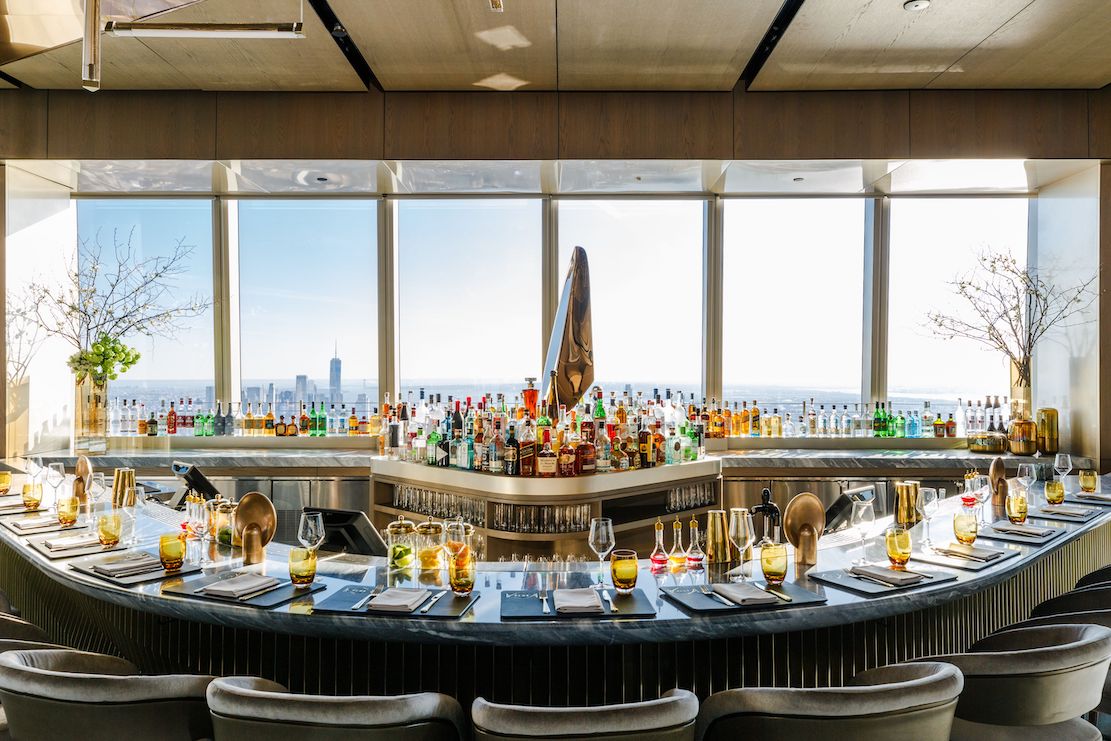 Add to that
a lavish and creative menu by Christopher Cryer
and world-class wine list and you have quite a
total package no one—tourist or gourmand—could
dismiss as mere spectacle.
Add to that
a lavish and creative menu by Christopher Cryer
and world-class wine list and you have quite a
total package no one—tourist or gourmand—could
dismiss as mere spectacle.
One big caveat is that Peak is located
within the city’s most grotesque maze of a
building, Hudson Yards, which is not only a
sterile showcase for pricey international
boutiques usually empty of customers but a
series of Piranesian escalators and elevators
(including the dedicated express that takes you
to Peak) that can make even finding the
restaurant a twenty-minute slog, including
multiple requests for directions. Many noted
restaurateurs have regretted going into that
off-putting space for lack of business. Hudson
Yards belongs in Macao, not Manhattan. (For
those who come in by car, nearby street parking
is non-existent and parking lots expensive;
there is no subway stop either.)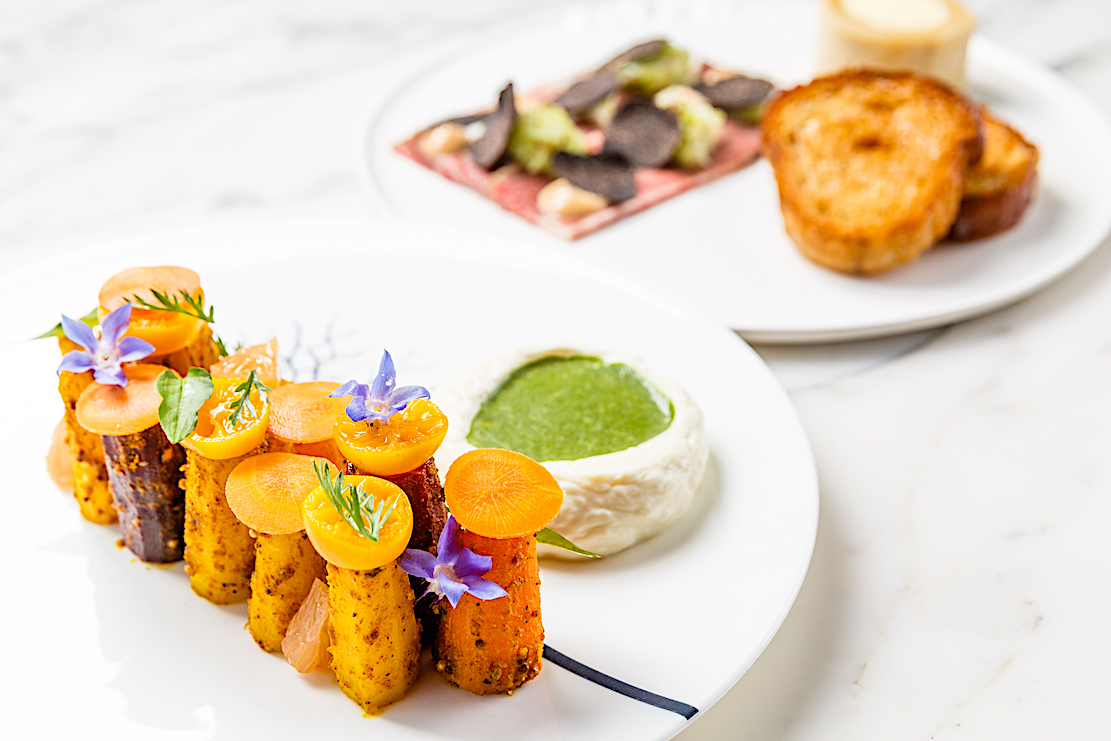
That said, Peak is worth the effort, and
apparently is so seven days a week for those who
come for the view from The Edge terrace a floor
below, or the snazzy bar that stocks more than
200 spirits. Developed by the RHC group and
designed by David Rockwell, the tall ceilings
and wraparound windows do not try to compete
with the view. The décor is fairly
straightforward, with a metal ceiling, though
it’s way too gray overall, yet somehow Rockwell
(who has designed some very loud restaurants for
Danny Meyer) has managed to allow table
conversations at a normal level. Music
plays in the background but seems to get louder
by nine o’clock.
Cryer has carte blanche to buy the best
ingredients, from Amish chickens to Colorado
lamb, as has beverage director Zack Kameron, who
stocks a 1,100-label wine list with lots of
large formats and plenty of trophies (a DRC goes
for $17,500) but, alas, very few bottles under
$100 on a screed that should certainly be more
proletarian. One wonders why the list needs
scores of sparkling wines, with a delightful
rolling cart of Champagnes, and who, really, is
ordering the 15th Meursault down the list or
either of two $499 California Syrahs.
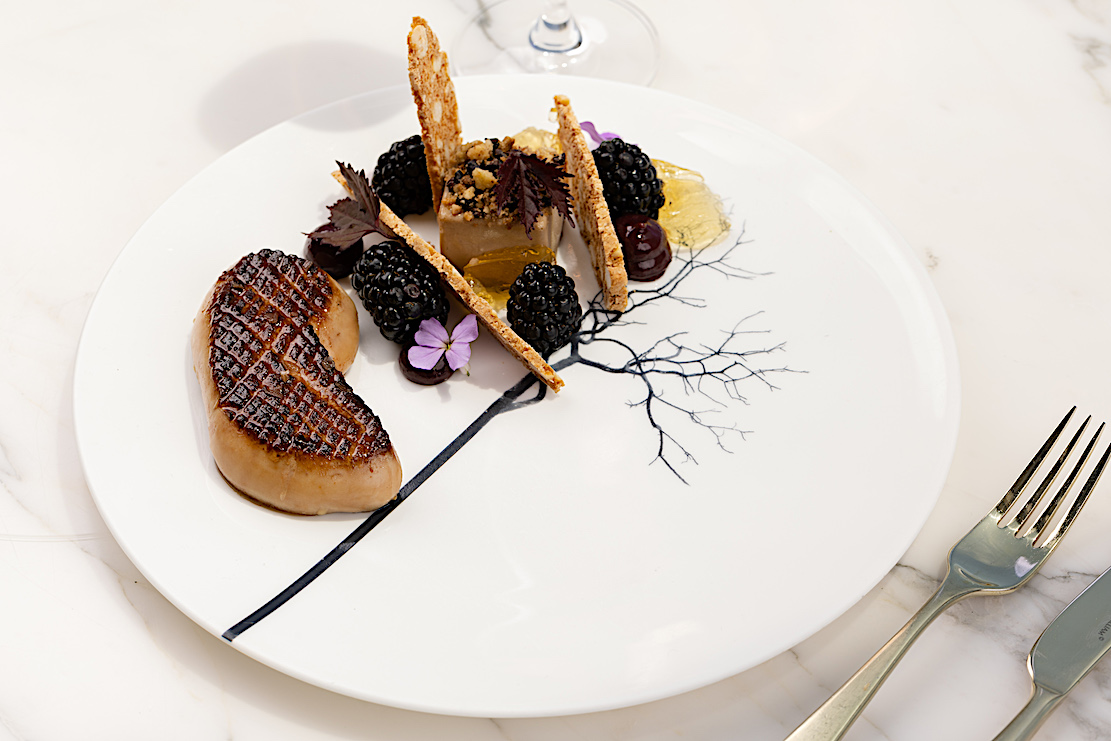 After
uttering our unstifled oohs and ahs over the
cityscape and waterways below us, our table of
four found the menu to be unexpectedly, but
admirably, short, with a shellfish section, nine
apps and eight mains. The chef sent out an amuse of
crispy cannons of mushroom duxelle and Hudson
Valley cheddar topped with a sprinkling of
Australian truffles. Also from the Valley came
creamy fresh foie gras ($30) with a gelée made
with 2002
Château Suduiraut (left) —which goes for
$240 a bottle on the wine list. A very
hearty and generous dish is the ballotine of
pork ($29) with glazed bacon, hot n’duja
sausage and ripe apricots. Equally so are the
short ribs ($34) with a beef jam, summer morel
mushrooms and oat bread, which would make for a
satisfying entrée.
After
uttering our unstifled oohs and ahs over the
cityscape and waterways below us, our table of
four found the menu to be unexpectedly, but
admirably, short, with a shellfish section, nine
apps and eight mains. The chef sent out an amuse of
crispy cannons of mushroom duxelle and Hudson
Valley cheddar topped with a sprinkling of
Australian truffles. Also from the Valley came
creamy fresh foie gras ($30) with a gelée made
with 2002
Château Suduiraut (left) —which goes for
$240 a bottle on the wine list. A very
hearty and generous dish is the ballotine of
pork ($29) with glazed bacon, hot n’duja
sausage and ripe apricots. Equally so are the
short ribs ($34) with a beef jam, summer morel
mushrooms and oat bread, which would make for a
satisfying entrée.
Atlantic sea scallops ($35) were
themselves sumptuously fat and sweet, but in a
singular misstep, Cryer tops it with awful
California fish roe unworthy of the name caviar,
compromising the subtle but rich flavor of the
mollusks. Yellowfin tuna ($29) with melon was
refreshing and had a little chile spark. For
vegetarians, there is a dish of 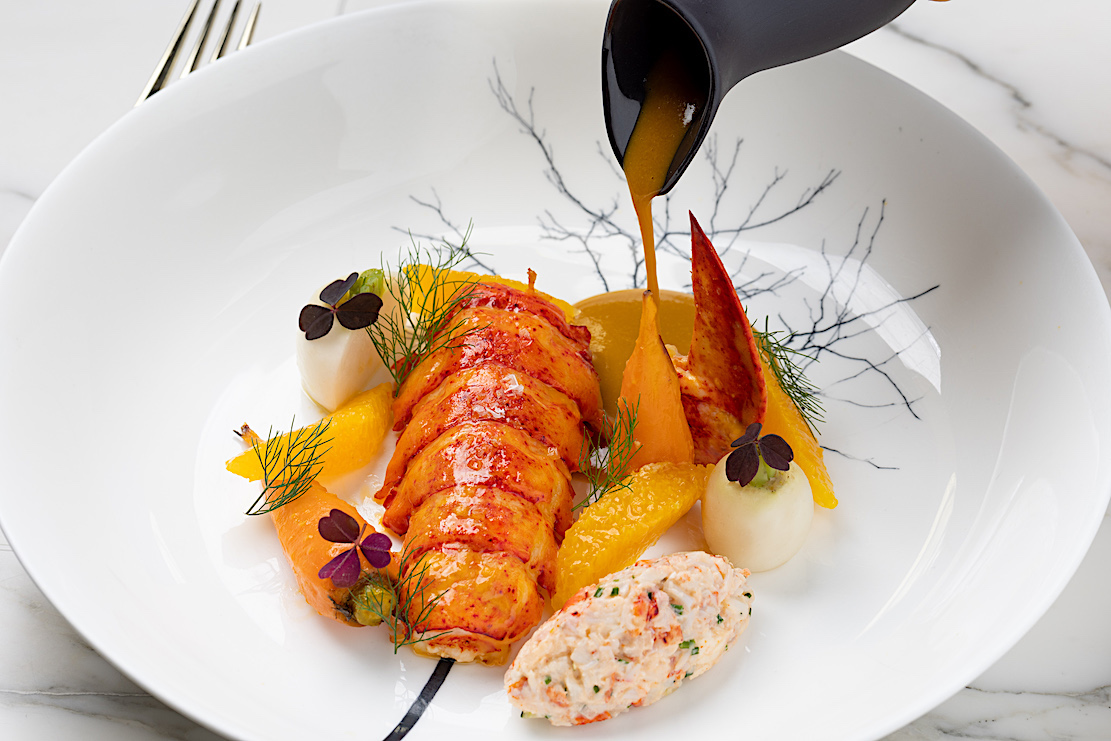 cold
carrots with ricotta and tangerines (above,
right; $21).
cold
carrots with ricotta and tangerines (above,
right; $21).
For main courses, the Amish chicken (below)
provided plenty of flavor after being brined,
air dried, stuffed with breadcrumbs, butter and
preserved lemon, rubbed with a yogurt marinade
and roasted, then served with leek spaetzle,
pickled vegetables and the crispy chicken thigh,
all in a beer jus.
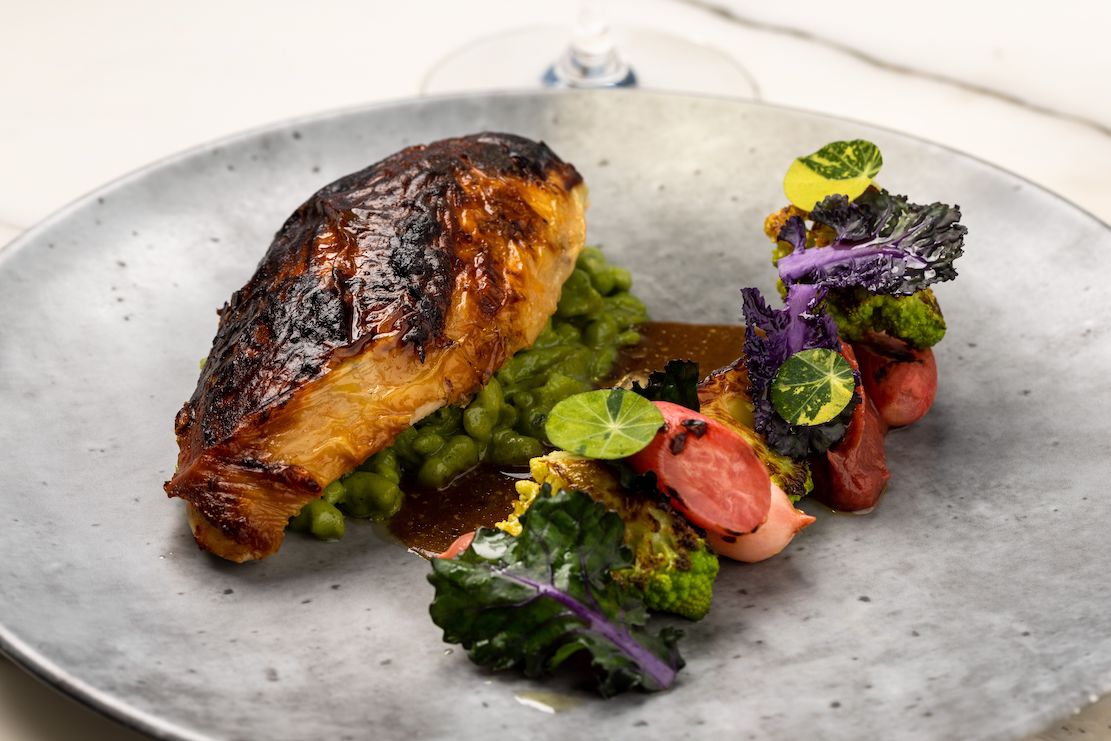 Nicely cooked carrots show up with an
admirable amount of lobster (right; $59):
The tail is poached and glazed with an emulsion
of orange, lobster stock and butter, while the
claw meat and knuckles go into a salad on the
plate. The lobster shells are utilized for a
lush Asian coconut curry sauce.
Nicely cooked carrots show up with an
admirable amount of lobster (right; $59):
The tail is poached and glazed with an emulsion
of orange, lobster stock and butter, while the
claw meat and knuckles go into a salad on the
plate. The lobster shells are utilized for a
lush Asian coconut curry sauce.
The lamb, culled from small farms, has a
fine chew, with a touch of smokiness on the
belly meat, and leeks, dates and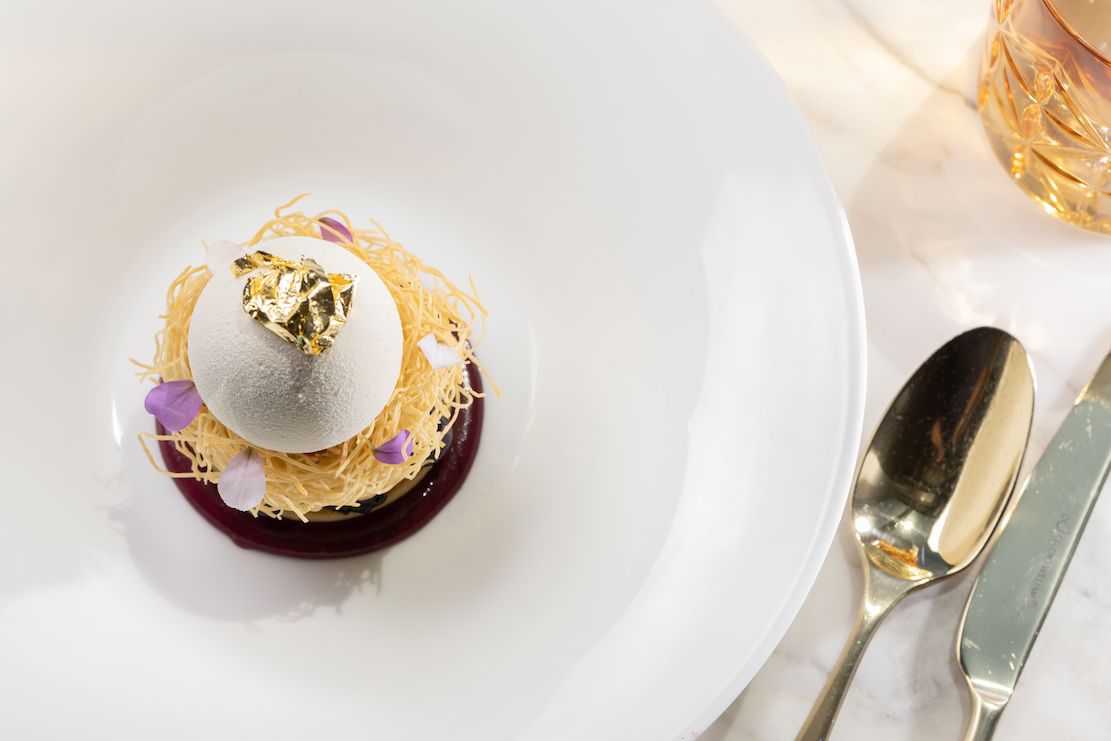 walnuts sweetened the meat ($53). Nothing
particularly enlightening about the filet mignon
(six ounces for a whopping $69), with mushrooms,
broccoli, spinach and a rich bone marrow
bordelaise.
walnuts sweetened the meat ($53). Nothing
particularly enlightening about the filet mignon
(six ounces for a whopping $69), with mushrooms,
broccoli, spinach and a rich bone marrow
bordelaise.
Cryer’s cooking is certainly sumptuous,
though pulling back one item from some of the
overloaded plates wouldn’t hurt, and would
probably help.
No need to cut back pastry
chef Jeff Wurtz’s desserts, though, which begin
with a simple yuzu sherbet
then offers the options of strawberries
with a crunchy almond granola, yogurt sorbet and
strawberry jus ($20), and cherries with a
Sicilian pistachio crumble, cherry jam,
pistachio gelato and cherry granité
($17). Layer after layer of flavors and
textures distinguish the chocolate sablé,
milk chocolate caramel mousse, caramel glaze,
chocolate cremeux, sea salt and malt ice cream
extravaganza ($17), but the Barnum & Bailey
moment is “the Egg” (above) whose sugary
shell breaks open to reveal blackberry curd,
sugar cookie, crème fraȋche mousse, lemon and
blueberry jam ($18).
options of strawberries
with a crunchy almond granola, yogurt sorbet and
strawberry jus ($20), and cherries with a
Sicilian pistachio crumble, cherry jam,
pistachio gelato and cherry granité
($17). Layer after layer of flavors and
textures distinguish the chocolate sablé,
milk chocolate caramel mousse, caramel glaze,
chocolate cremeux, sea salt and malt ice cream
extravaganza ($17), but the Barnum & Bailey
moment is “the Egg” (above) whose sugary
shell breaks open to reveal blackberry curd,
sugar cookie, crème fraȋche mousse, lemon and
blueberry jam ($18).
Petit fours, raspberry dark chocolate and
a hazelnut macaron finish off the feast.
Next to us at
a prime corner table was a gentleman kneeling to
present an engagement ring to a woman suitably
gushing and a room of onlookers in applause.
Peak is made for such moments and for anyone
celebrating anything. But for those who also
relish a superb meal, well, you get that, too.
Photo by Walter Bagley
Open for lunch
and dinner daily.
ANOTHER VERMEER

As
helpful as Gerald Kiley had been thus far, it
bothered David that without credentials of his
own there were doors of investigation closed
to him. He was no longer with NYPD, didn’t
even have a private detective’s license, and
he began to think he was getting rusty in his
skills. While he was the head of NYPD’s
Special Investigations Unit, he could count on
access wherever he sought it, except in those
mob cases where, for reasons never revealed to
him, he was waved off, or forbidden by a judge
to plant recording devices in suspects’
premises. He knew, of course, that some judges
were on the take from the mob, while a very
few others had required unquestionable proof
that such bugging was constitutional.
Of course, NYPD could never put a bug
inside a foreign embassy, though the FBI or CIA
could. Now David had no clout with either
organization and wouldn’t dare phone Frank
English on such circumstantial evidence of
highly questionable activities. As Kiley had
said, no crime, no way for Interpol to bring a
case. And David began, quite deliberately, to
question his own judgments about the
coincidences of three billionaire art collectors
all seeming to be marginalized as bidders: in
the case of Saito by possible poisoning; of
Correia by kidnapping; and of Louden by
attempted murder. Three people on three
continents whose only common denominator was
their wealth and their art collections.
But he couldn’t help thinking, even
hoping, there would be another attempt to get
another bidder out of the game. Kiley had
already weighed in that Stepanossky was the most
likely candidate to arrange for bad things to
happen to his competitors. But, since the
incident with the Chinese delegate, David was no
longer so sure he agreed. How would Stepanossky
lure in a Chinese delegate to murder Louden,
knowing that the would-be assassin would claim
sanctuary in his own embassy, when the last
thing the Chinese would want to see was fewer
bidders on the painting? He’d
already ruled out Balaton for much the same
reason.
That left the Dutchman Dorenbosch, the
Greek Danielides, and Shui of Taiwan. From what
David knew, the first two had probably gained
their wealth through connivance at the very
least and very probably through criminal
activities. Shui, while very shadowy, with his
own history of corruption, had a decades’ old
adversarial relationship with the Red Chinese,
but, David thought, for that reason Shui would
have to tread very lightly and stay out of the
spotlight as much as possible. How could an
anti-communist Shui ever get a minor embassy
delegate to knock off Louden?
Indeed, if the Vermeer was
indeed sold to the Shui family back in the
1660s, it was one treasure they were obviously
not able to get out of China after 1949, and
there had to be very bad blood between the
adversaries. Then again, the Chinese may not
have had any inkling that the painting was done
for the Shui family in the first place. They
would have had to have puzzled out the same
theory as had Katie and David and the Fordham
professors, which was still highly speculative.
In any case, the Chinese might try to
shut Shui out of the auction for political
reasons, even if he tried to bid through a third
party. Were he found to be the one to order hits
on his competitors, it would be impossible that
he would be allowed to bid.
It
was all still a mass of circumstantial evidence,
and David knew that if he were still a cop, he’d
have nothing to justify an arrest of anyone,
except the hit-and-run diplomat. It might all
add up to a good magazine article for Katie, but
not enough to bring to a grand jury.
David was never one to concoct evidence
in order to railroad a bastard everyone at NYPD
knew was guilty—well, maybe once or twice—but
since he now had no power of enforcement he felt
far more frustrated than those times when he was
beating his head against a bureaucratic stone
wall. He’d never admit it to Katie, but, if one
of the other billionaires had an accident in the
coming week, David wouldn’t be unhappy to hear
it.
He thought of trying to call Dorenbosch,
Danielides, Stepanossky and Shui directly, but
he knew he hadn’t a chance of getting through
without an official investigative title. Just to
hear if those remaining four were living happily
with their billions, he did call their corporate
public relations offices for comment, though not
expecting much if any of an actual report.
Representing himself as a “researcher” for McClure’s,
David would just ask the men’s whereabouts and
if there was any chance of speaking to them
directly.
Dorenbosch’s spokesman said his boss was
at the moment in Amsterdam, with no plans to
travel until December. Danielides’
representative said only that he was on
vacation, without saying where. Stepanossky’s
and Shui’s people refused any comment but said
their employers were very well, thank you.
In
other words, David learned next to nothing.
© John Mariani, 2016
❖❖❖
❖❖❖
THE
PLEASURES OF RED WINES
NOT DESIGNED TO ROCK YOUR
SOCKS
By John Mariani
"Bacchanalia" by Nicholas Poussin
(1623)
More
than a few times I have inveighed against high
alcohol wines, mostly reds but even some whites,
that go above 14.5%, which is, sorry to say, an
ever increasing trend. Maybe not even a trend but
a new normalcy, with global warming a contributing
factor. There are, of course, some wines, like
Amarone della Valpolicella, that have always been
high in alcohol in a style that defines them. But
there are also a lot of vintners, led by the
northern Californians, who deliberately hike their
wines above 14.5%, which usually means an
out-of-balance blockbuster full of tannins, with
no guarantee they will mature into balance.
Fortunately,
there are still plenty of sensible wineries that
distance themselves from that school, not least
traditional producers in Bordeaux, Burgundy and
Northern Italy. These wines are not overpowered by
alcohol or tannins and reveal what the true charms
of a wine should be, that is, a balance of fruit,
acids and tannins that are as important as the
correct tuning of a car’s engine or a guitar’s
strings.
Here
are some of those wines I’m enjoying these days,
sometimes while strumming my guitar and watching the
cars race by.
COSENTINO “THE POET”
MERITAGE 2000 ($65; current 2019
vintage is $55)—A Yountville masterpiece whose 14.4%
alcohol and 22 years of maturity demonstrate what’s
possible when winemakers are patient and seek
equilibrium in their wines. It’s an unfined Meritage
blend of 60% Cabernet Sauvignon, 22% Cabernet Franc
and 18% Malbec, and it’s silky and long-lasting, and
the price is certainly right.
 DRY CREEK CABERNET
SAUVIGNON 2019 ($30)—Here’s a fine
example of a why a Cabernet Sauvignon (77%), married
with Merlot, Malbec, Petite Verdot and Cabernet
Franc, can not only be so much more interesting that
100% Cab, but how it can be so boldly delicious at
just 14% alcohol and such a terrifically sane price
tag. It’s a youngster, so it should get better in a
year or two, but tastes very good right now.
DRY CREEK CABERNET
SAUVIGNON 2019 ($30)—Here’s a fine
example of a why a Cabernet Sauvignon (77%), married
with Merlot, Malbec, Petite Verdot and Cabernet
Franc, can not only be so much more interesting that
100% Cab, but how it can be so boldly delicious at
just 14% alcohol and such a terrifically sane price
tag. It’s a youngster, so it should get better in a
year or two, but tastes very good right now.
NICOLAS & JAY
BISHOP CREEK PINOT NOIR 2019 ($90 estimate)—I’ve long
been a champion of Yamhill, Oregon, Pinot Noirs for
the bright fruitfulness brought forth from grapes
growing in a cooler climate, and, at 13% alcohol,
much like the finest
Burgundies, this has the finesse I seek in the
varietal, making it easy to pair with a wide range
of foods, not least wild Pacific salmon or Colorado
lamb. A rainy season delayed ripening, followed by a
dry August, which brought out the aromatics, and
winemakers Jean-Cicolas Méo and Tracy Kendall did
well by them. I tasted an early release, but this
fall this is going be a real beauty.
COUVENT DES THORINS
MOULIN-À-VENT 2019 ($30)—The Gamay grape
that goes 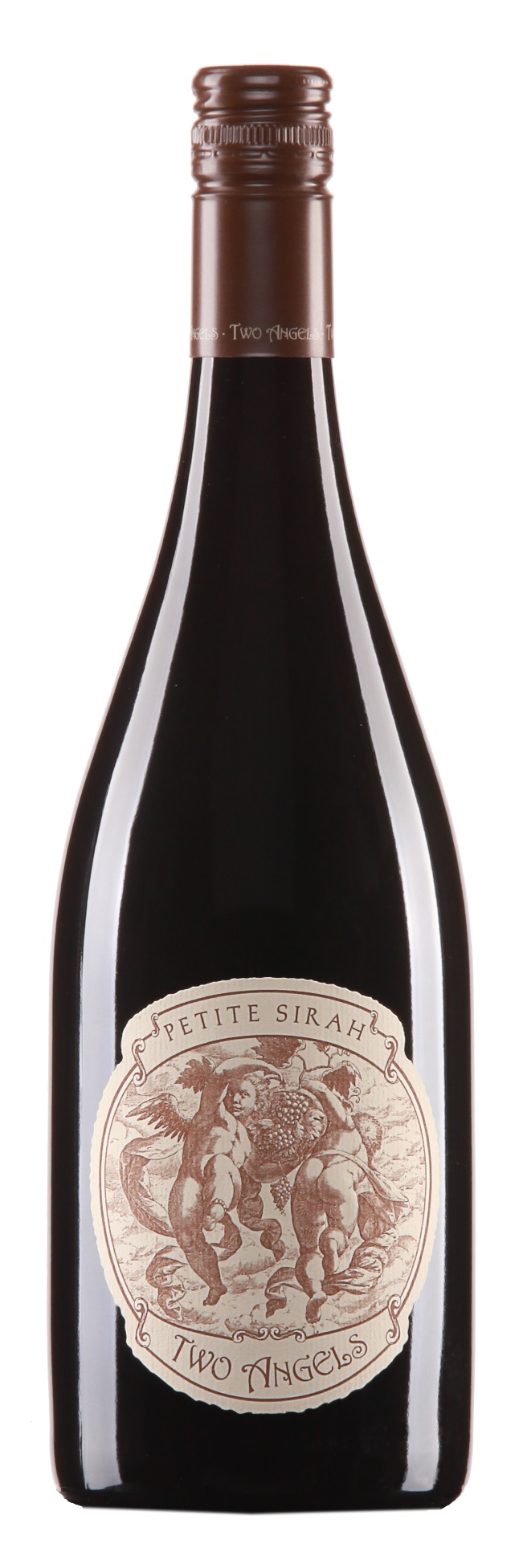 into Beaujolais is a favorite of
those who like big, fruity wines without high
alcohol, and this 2019 vintage shows how well they
can age into lovely, medium-body, 13% alcohol wines
that are very versatile for almost everything but
white-flesh fish. The soil has plenty of minerality,
not least manganese and metallic oxides that provide
bracing, flinty flavors that are so refreshing.
into Beaujolais is a favorite of
those who like big, fruity wines without high
alcohol, and this 2019 vintage shows how well they
can age into lovely, medium-body, 13% alcohol wines
that are very versatile for almost everything but
white-flesh fish. The soil has plenty of minerality,
not least manganese and metallic oxides that provide
bracing, flinty flavors that are so refreshing.
TWO ANGELS PETITE
SIRAH 2018 ($25)—The label from this
Oakville, California, winery reads, “the theme of
the [two angels] is the hilarity of inebriation and
trauma of the morning after. Excessive joy must be
counted by equally excessive sorrow, with potential
atonement for pleasure.” Quite a candid mouthful,
that, but this is an awfully easy wine to drink,
with 14.4% alcohol. It has the varietal’s deep
purple color and floral nose, and delivers a lasting
finish. It’s not easy to find 100% Petite Sirahs,
and those of this quality are rare indeed.
❖❖❖
 TOP TEN WAYS TO DIE, NUMBER 3
TOP TEN WAYS TO DIE, NUMBER 3
In Elizabethtown, PA, two people were rescued after
they somehow fell into a partially filled chocolate
tank while doing maintenance work at the Mars
Wrigley plant. It was not clear how they fell into
the tank, but emergency responders had to cut a hole
in the bottom of the tank to save them.
❖❖❖
Any of John Mariani's books below may be ordered from amazon.com.
 The Hound in Heaven
(21st Century Lion Books) is a novella, and
for anyone who loves dogs, Christmas, romance,
inspiration, even the supernatural, I hope you'll find
this to be a treasured favorite. The story
concerns how, after a New England teacher, his wife and
their two daughters adopt a stray puppy found in their
barn in northern Maine, their lives seem full of promise.
But when tragedy strikes, their wonderful dog Lazarus and
the spirit of Christmas are the only things that may bring
his master back from the edge of despair.
The Hound in Heaven
(21st Century Lion Books) is a novella, and
for anyone who loves dogs, Christmas, romance,
inspiration, even the supernatural, I hope you'll find
this to be a treasured favorite. The story
concerns how, after a New England teacher, his wife and
their two daughters adopt a stray puppy found in their
barn in northern Maine, their lives seem full of promise.
But when tragedy strikes, their wonderful dog Lazarus and
the spirit of Christmas are the only things that may bring
his master back from the edge of despair. WATCH THE VIDEO!
“What a huge surprise turn this story took! I was completely stunned! I truly enjoyed this book and its message.” – Actress Ali MacGraw
“He had me at Page One. The amount of heart, human insight, soul searching, and deft literary strength that John Mariani pours into this airtight novella is vertigo-inducing. Perhaps ‘wow’ would be the best comment.” – James Dalessandro, author of Bohemian Heart and 1906.
“John Mariani’s Hound in Heaven starts with a well-painted portrayal of an American family, along with the requisite dog. A surprise event flips the action of the novel and captures us for a voyage leading to a hopeful and heart-warming message. A page turning, one sitting read, it’s the perfect antidote for the winter and promotion of holiday celebration.” – Ann Pearlman, author of The Christmas Cookie Club and A Gift for my Sister.
“John Mariani’s concise, achingly beautiful novella pulls a literary rabbit out of a hat – a mash-up of the cosmic and the intimate, the tragic and the heart-warming – a Christmas tale for all ages, and all faiths. Read it to your children, read it to yourself… but read it. Early and often. Highly recommended.” – Jay Bonansinga, New York Times bestselling author of Pinkerton’s War, The Sinking of The Eastland, and The Walking Dead: The Road To Woodbury.
“Amazing things happen when you open your heart to an animal. The Hound in Heaven delivers a powerful story of healing that is forged in the spiritual relationship between a man and his best friend. The book brings a message of hope that can enrich our images of family, love, and loss.” – Dr. Barbara Royal, author of The Royal Treatment.
 |
The Encyclopedia of American Food and Drink by John F. Mariani (Bloomsbury USA, $35) Modesty forbids me to praise my own new book, but let me proudly say that it is an extensive revision of the 4th edition that appeared more than a decade ago, before locavores, molecular cuisine, modernist cuisine, the Food Network and so much more, now included. Word origins have been completely updated, as have per capita consumption and production stats. Most important, for the first time since publication in the 1980s, the book includes more than 100 biographies of Americans who have changed the way we cook, eat and drink -- from Fannie Farmer and Julia Child to Robert Mondavi and Thomas Keller. "This book is amazing! It has entries for everything from `abalone' to `zwieback,' plus more than 500 recipes for classic American dishes and drinks."--Devra First, The Boston Globe. "Much needed in any kitchen library."--Bon Appetit. |
"Eating Italian will never be the same after reading John Mariani's entertaining and savory gastronomical history of the cuisine of Italy and how it won over appetites worldwide. . . . This book is such a tasteful narrative that it will literally make you hungry for Italian food and arouse your appetite for gastronomical history."--Don Oldenburg, USA Today. "Italian
restaurants--some good, some glitzy--far
outnumber their French rivals. Many of
these establishments are zestfully described
in How Italian Food Conquered the World, an
entertaining and fact-filled chronicle by
food-and-wine correspondent John F.
Mariani."--Aram Bakshian Jr., Wall Street
Journal.
"Equal parts
history, sociology, gastronomy, and just
plain fun, How Italian Food Conquered the
World tells the captivating and delicious
story of the (let's face it) everybody's
favorite cuisine with clarity, verve and
more than one surprise."--Colman Andrews,
editorial director of The Daily
Meal.com. "A fantastic and fascinating
read, covering everything from the influence
of Venice's spice trade to the impact of
Italian immigrants in America and the
evolution of alta cucina. This book will
serve as a terrific resource to anyone
interested in the real story of Italian
food."--Mary Ann Esposito, host of PBS-TV's
Ciao
Italia. "John Mariani has written the
definitive history of how Italians won their
way into our hearts, minds, and
stomachs. It's a story of pleasure over
pomp and taste over technique."--Danny Meyer,
owner of NYC restaurants Union Square
Cafe, The Modern, and Maialino.
|
 |
 |
 |
 |
 |
 |
 Everett Potter's Travel Report:
Everett Potter's Travel Report: 
 Eating Las
Vegas
Eating Las
Vegas
MARIANI'S VIRTUAL GOURMET
NEWSLETTER is published weekly. Publisher: John Mariani. Editor: Walter Bagley. Contributing Writers: Christopher
Mariani, Misha Mariani, John A. Curtas, Gerry Dawes, Geoff Kalish.
Contributing
Photographer: Galina Dargery. Technical
Advisor: Gerry
McLoughlin.
If you wish to subscribe to this
newsletter, please click here: http://www.johnmariani.com/subscribe/index.html
© copyright John Mariani 2022
